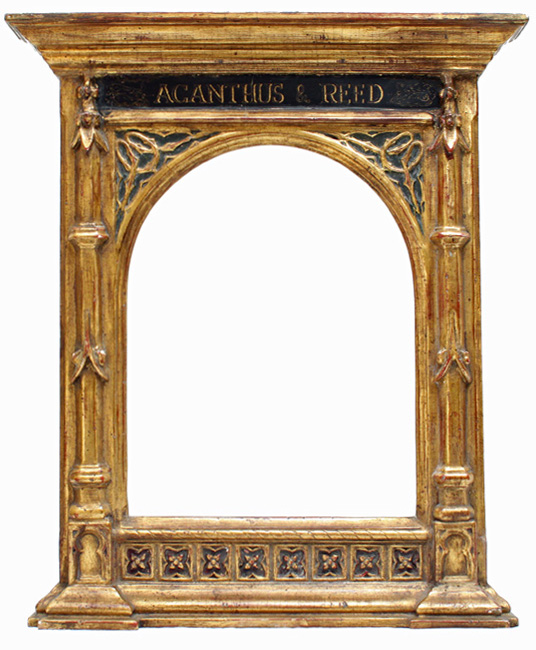
| Contact & Showroom |
Architecture and the frame

As ubiquitous as frame shops are today it's hard to believe they did not exist until the mid 19th century. The new technologies of mass production allowed the creation of the machined picture frame moulding. This created a new industry that made picture frames more affordable; but, it overlooked centuries of exquisite design based on classical discipline and craftsmanship. |

Before the Industrial Revolution, picture frame design was the purview of architects for their wealthy patrons. The early Renaissance saw the development a frame fashioned after the facade of ancient Greek and Roman temples. This frame is called the Tabernacle and is a clear example of how architecture and frame design go hand in hand. A century ago Stanford White designed contemporary versions for his clients. The floral motifs, columns, dentils and other architectural icons are dramatic and beautiful in the intimate venue of a Tabernacle frame. This is the foundation of the Cassetta or board frame with its embellishments of beads, reeds, egg and dart, guilloche, sgrafitto and many more examples taken from the vocabulary of architecture. More recently Le Corbusier and Mies Van der Rohe inspired the narrow wood and aluminum frames commonly used on contemporary art. Frame design has always been tied to architecture. Look around your home and you will see how architecture literally frames our lives with window sashes, door surrounds, crown moudlings and baseboards. I've always admired architecture; I never dreamed my enthusiasm for this craft would take me on a journey that would bring me to picture frame design, but I'm glad it did. |
Links:
|